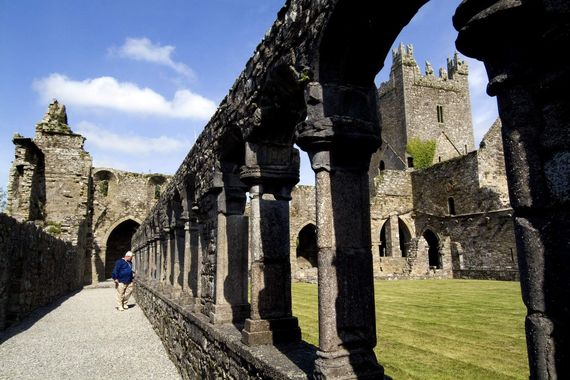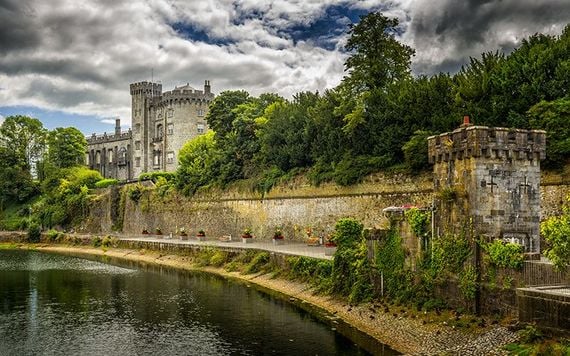Bones of contention on the feast day of St. Nicholas! Mal Rogers journeys to Kilkenny to investigate the whereabouts of St. Nicholas, a.k.a. Santa Claus.
Ireland seems to have cornered the market in providing eternal repose to the world’s favorite saints. St. Patrick, the March patron saint of partydom, lies buried in Downpatrick. The remains of St. Valentine, savior of the greeting card and chocolate industry in that quiet time between Christmas and Easter, are held in a casket at Whitefriar Street Carmelite Church in Dublin. There is also a persistent legend that Ireland guards the relics of the most popular saint of them all - Santa Claus himself. According to this legend, the earthly remains of St. Nicholas can be found in the ruined church of an abandoned medieval town just north-west of Jerpoint Abbey.
There is little sign today of Newtown Jerpoint. The deserted village lies on the banks of the Little Arrigle River opposite the abbey. It’s not certain when the village failed – another local legend states that Silken Thomas burned Newtown Jerpoint in 1534. Today almost all that is left is the church of St. Nicholas, lying on a farm to the west of Jerpoint Abbey. And here in the grounds of the ruined church a strange slabstone of a grave has aroused local debate for hundreds of years.

Jerpoint Abbey, outside Kilkenny.
St Nicholas’ church was built between the 12th and 13th centuries, but the tombstone appears to be more of a 14th-century design. The grave shows the effigy of a cleric - probably a bishop - overlooked by two stone heads. Locally, the effigy is reputed to be that of St. Nicholas, Bishop of Myra (a.k.a. Santa Claus), with the heads depicting the two crusaders who brought the remains of the bishop back to Ireland.
No one is quite sure when the legend arose, but the bones of the story are that a band of Irish-Norman knights from the locality journeyed to the Holy Land during the Crusades. After much derring-do, they seized the remains of the revered St. Nicholas, former Bishop of Myra (in what is now Turkey), and brought them back home to Kilkenny. It would be fair to point out that most other historical sources claim that the bones of St. Nicholas in fact went to Bari, in Italy.
Read more
Some facts, however, do lean towards the Kilkenny version of events. This was one of the first areas of Ireland to be settled by the Normans, who were avid relic collectors - arguably more so than the Italians, who had plenty of icons of their own. And there is factual evidence that Irish-based Norman knights ventured to the Middle East during the Crusades.

Kilkenny Castle, Kilkenny.
The De Clare Purparty (1247), part of the Chancery Miscellanea, in Knights’ Fees in Counties Wexford, Carlow and Kilkenny, contains details of several Norman noblemen owning land in the Barony of Knocktopher, which includes Newtown Jerpoint. It seems that one William de Dene had half an acre in the vicinity while William Archid (le Archer) also enjoyed the benefits of real estate nearby.
Now at this remove in time, it’s difficult to glean much information about these Norman knights, although some reports describe William Archid and William de Dene as particularly ‘bellicose and pious’. It’s probably no coincidence that the laws passed to prevent the Norman settlers becoming ‘more Irish than the Irish’ were known as the Statutes of Kilkenny. William Archid and his compatriots must have felt very at home in their new environment - sharing a great religious faith with their new neighbors, along with a readiness to fight all comers for their beliefs. In fact, just the sort of men we’re looking for. Could the two Williams be the Crusaders who brought Santa to Kilkenny?
There is a further twist to this story, a final seasonal flourish if you like, although it’s hard to tell if this diminishes the truth of the legend or tends to support it. Several years ago the gravestone in Newtown Jerpoint was cracked when a tree fell on it. A Christmas tree. But you’ll already have guessed that.

Love Irish history? Share your favorite stories with other history buffs in the IrishCentral History Facebook group.




Comments